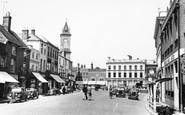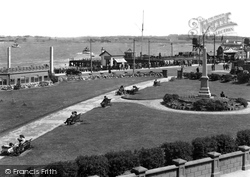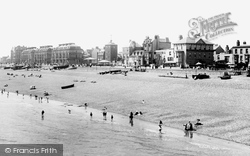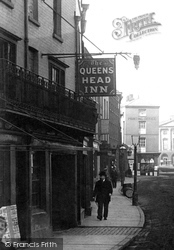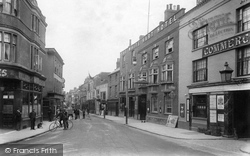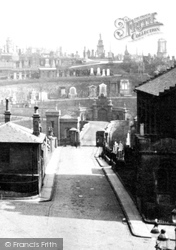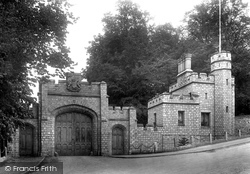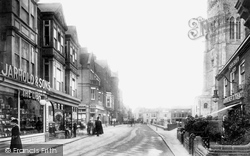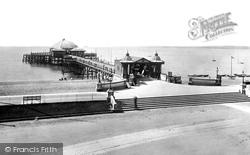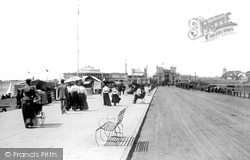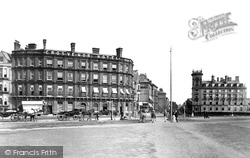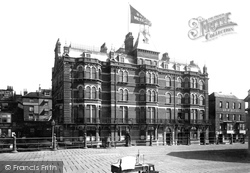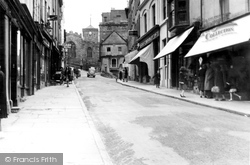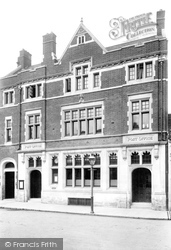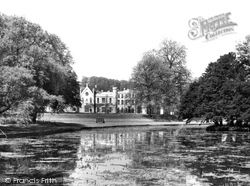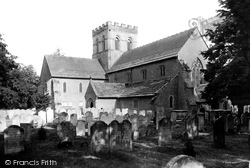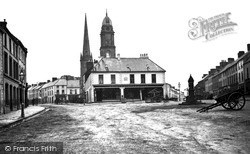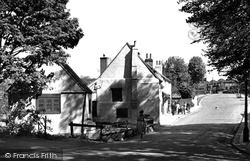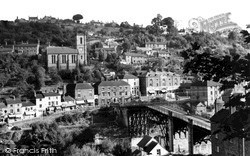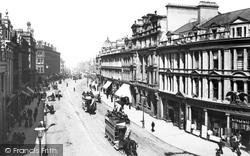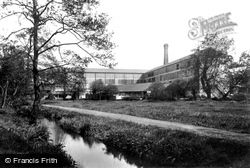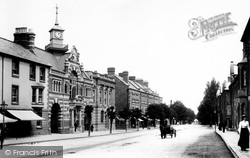Merry Christmas & Happy New Year!
Christmas Deliveries: If you placed an order on or before midday on Friday 19th December for Christmas delivery it was despatched before the Royal Mail or Parcel Force deadline and therefore should be received in time for Christmas. Orders placed after midday on Friday 19th December will be delivered in the New Year.
Please Note: Our offices and factory are now closed until Monday 5th January when we will be pleased to deal with any queries that have arisen during the holiday period.
During the holiday our Gift Cards may still be ordered for any last minute orders and will be sent automatically by email direct to your recipient - see here: Gift Cards
Places
26 places found.
Those places high-lighted have photos. All locations may have maps, books and memories.
- Town End, Derbyshire
- Town End, Buckinghamshire
- Town's End, Somerset
- Towns End, Dorset
- Town End, Merseyside
- Town End, Cambridgeshire
- Town's End, Buckinghamshire
- West End Town, Northumberland
- Bolton Town End, Lancashire
- Kearby Town End, Yorkshire
- Town End, Cumbria (near Grange-Over-Sands)
- Town End, Cumbria (near Bowness-On-Windermere)
- Town End, Yorkshire (near Huddersfield)
- Town End, Yorkshire (near Wilberfoss)
- Town End, Cumbria (near Appleby-in-Westmorland)
- Town's End, Dorset (near Melbury Osmond)
- Town's End, Dorset (near Swanage)
- Town End, Cumbria (near Ambleside)
- Town End, Cumbria (near Lakeside)
- Town End, Cumbria (near Kirkby Lonsdale)
- Town End, Cumbria (near Ambleside)
- Town's End, Dorset (near Bere Regis)
- West-end Town, South Glamorgan
- Townend, Derbyshire
- Townend, Strathclyde (near Dumbarton)
- Townend, Staffordshire (near Stone)
Photos
23 photos found. Showing results 281 to 23.
Maps
195 maps found.
Books
3 books found. Showing results 337 to 3.
Memories
3,720 memories found. Showing results 141 to 150.
Growing Up In Runcorn
I was born and bred in Runcorn. I lived on Weston Road. I was born in 1963 and left the town in 1984. What a great place it was. You could buy just about anything in Runcorn from food, furnishing, a new car, you name it and a ...Read more
A memory of Runcorn
A Life In Consett
I was born in Consett in 1951 and spent all of my life here, I can remember lots of things mentioned in previous letters especially the Rex, I spent lots of Saturday mornings there, also Rossi's and Dyambro's on Saturday ...Read more
A memory of Consett in 1951 by
Bournemouth
We enjoyed a wonderful family holiday in the sixties, staying with Mrs Honeygold in a lovely house near Horseshoe Common. We still have a few photos of our visit to Compton Acres, a beautiful garden just outside town. Although it ...Read more
A memory of Bournemouth in 1964 by
Jtbells
This is the year I started on the building sites in 1963, I got a job on J. T. Bell's site in Whickam, the site hadn't been running long then as it was in the first stage. All the lads were mainly from Newburn, Lemington, and Throckley. If ...Read more
A memory of Newburn in 1963 by
Pound Street
My first main job on leaving school (Shaw House) was as a tea boy-dogsbody at H C James timber and builders merchants in Pound Street. For quite a while I cycled daily from Highclere Castle, approx 4 miles, it took me just over half ...Read more
A memory of Newbury in 1956 by
How Times Have Changed
Looking back at old photographs Harwich & Dovercourt has certainly changed, the Phoenix Hotel is no longer, it has been replaced by luxury flats, the train ferry service has closed, the High Street seems like a ghost ...Read more
A memory of Dovercourt by
My Childhood Garden Part I
My mother has often said to me "You don't appreciate what you've got until you lose it". She is wrong, for I will never forget the wonderful garden of my childhood and write below the memories that I will hold for ...Read more
A memory of Shamley Green in 1954 by
My Childhood Garden Part V
Beside the strawberry bed grew a large cooking apple tree that produced enormous green apples. We had a variety of both eating and cooking apple trees in the garden, the fruit from which was harvested and then ...Read more
A memory of Shamley Green in 1954 by
Childhood Memories South Park 1960s Approx
I like to remember my childhood in Darlington where I grew up until I moved to Whitley Bay. We used to spend lots of time in the South Park, on the swings, around the rose garden and of course the ...Read more
A memory of Darlington in 1960 by
Memories Of War Years 1939 45 Newport
Memories of War years 1939 -1945. By John Beal. Little did I realise that I would be involved in the army when war broke out in 1939. I was attending Hatherleigh Central School in Newport at the time and as ...Read more
A memory of Newport in 1940 by
Captions
5,054 captions found. Showing results 337 to 360.
The first detachment of officers at the new School of Musketry in that year brought a blaze of interest to the town.
In the days when sail reigned supreme, this was once the main harbour town in south-east England, servicing ships moored in the shallow waters of the Downs, between the treacherous Goodwin Sands and
The town was getting bigger. It began to spread westwards along Brochole Street (now Duke Street). The High Street itself was filling up.
The town was getting bigger. It began to spread westwards along Brochole Street (now Duke Street). The High Street itself was filling up.
Stretching down from the north side of town towards the coble landing, Filey is still a mixture of a fishing village and a Victorian resort.
Glasgow was never a walled town, but it had four gates at the points of the compass to control traffic.
Glasgow was never a walled town, but it had four gates at the points of the compass to control traffic.
Thus began the Carrington association with the town and the transformation of the manor house.
By the time of this photograph Cromer had experienced a continuing building boom, which included new premises for fashionable stores such as Jarrold & Sons (left), who are still flourishing both in Cromer
In the meantime, development, in the main of a residential nature, continued to spread north and east across Portsea Island.
In the meantime, development, in the main of a residential nature, continued to spread north and east across Portsea Island.
In the meantime, development, in the main of a residential nature, continued to spread north and east across Portsea Island.
The impressive facade of the Hotel Metropole, with the Ship Hotel next door, faced the end of the Jetty to greet the thousands of holidaymakers who travelled down on the paddle steamers.
A branch of Stead and Simpson, a shoe shop, is on the right directly opposite Cash & Co, also a shoe shop. Below and to the right of St Mary's Church we can see the gable end of the Old Post Office.
Plans are also under way for economic developments that should benefit the privately owned port of Boston and the people and businesses dependent on it.
It changed the look of the town. Ormond House, on the corner of the new road, now had its garden view dominated by a huge engine shed, and the price of the house fell accordingly.
During the Second World War the town was declared safe for both industry and people.
At first there was only an apsidal chancel and nave and a singular bell turret. A new vestry and two new porches were added in 1875. By 1884, a transept had also been added.
The church had cathedral status, and its structure is an example of Plantation Gothic. Its slim steeple tells of a Georgian's ideas on the style.
The ground floor comprised a hall, a parlour, a buttery and a kitchen. Upstairs were many chambers, all magnificently furnished.
down, and nobody appeared to be very interest- ed in it.
This shows the far end of the Avenue, looking into York Street.
Pullman's Westbrook Mill produced soft, chamois type leathers; Gay & Co in Ockford Road worked on small skins such as rabbit; and Rea and Fisher's by the railway, the heavier hides.
The town had two brickworks, the one on the Warren operating from 1750 to 1919 and one on the Porlock road operating from 1897 to 1947.
Places (26)
Photos (23)
Memories (3720)
Books (3)
Maps (195)


